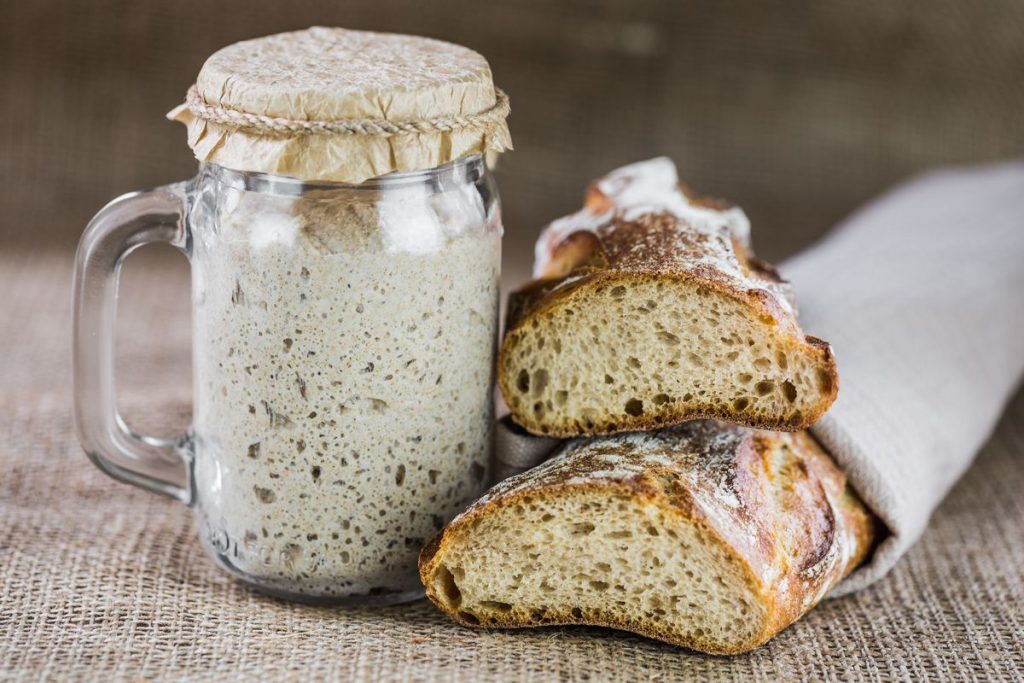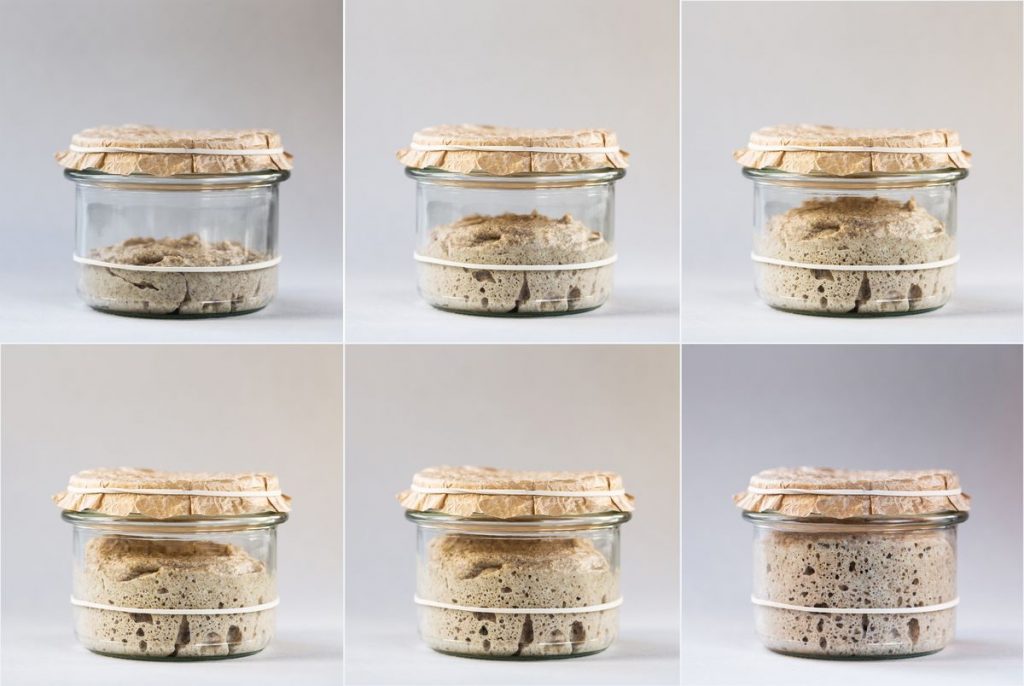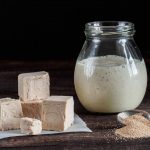Sourdough starter
Sourdough starter is a process of cultivating yeast naturally instead of using packaged yeast.

A sourdough starter is a rising agent that you can make at home and all you need are two ingredients: flour and water! Sourdough starter is most commonly associated with sourdough bread but it can be also be used to make pizza, pancakes and even waffles!
Check out our super simple sourdough starter recipe!
What is a sourdough starter?
A sourdough starter is simply a flour and water mixture used to cultivate wild yeast. Simply mix flour and water together and leave it for 24 hours. After this time you will need to ‘feed’ the starter, this is done by adding a fresh mixture of flour and water to the starter. Repeat this process for a few days and eventually bubbles will start to form in the mixture. This indicates that the mixture has become active with yeast. After a few more days the bubbles will increase and the mixture will have an almost frothy consistency.
This frothiness is created by microorganisms present in the flour and water, they create a lactic fermentation (which differs from alcoholic fermentation). Once fermentation has taken place a sourdough starter is technically a living organism!
If your starter is not rising keep feeding it, eventually it will start to bubble. Make sure it’s being kept at a constant temperature, it will favour slightly warmer conditions.
Using a starter is an ancient method which was what everyone used to make bread before we could buy commercially produced yeast. Bread made with a starter has a distinct taste and it tends to keep for longer due to its lactic acid content.
When making a sourdough starter you have to make sure that everything is really clean to avoid contamination.
Maintaining a sourdough starter

As already mentioned a starter needs to be ‘fed’ this consists of adding a little more flour and water so the microorganisms have something to feed off. This can be done by simply mixing the flour and water together and adding it to the starter. This can be done by hand or kitchen machine.
The best way to store a starter is to keep it in a jar with a cloth covering the top, a good tip is to secure it with string or an elastic band.
If you are an avid baker and you are using your starter on a regular basis you can leave it on your kitchen counter. You will need to feed it daily but this method guarantees that your starter is ready to go at a moments notice!
If you bake a little less frequently a good option is to keep the starter in the fridge. A good rule of thumb is to feed it once a week. Keeping it refrigerated is great you don’t bake daily but remember you will need to bring the starter up to room temperature before using it.
If your starter has separated (you see some liquid on top) simply mix it with a clean spoon to combine again.
Before using be sure to check for mould. Unfortunately, you need to discard the whole starter if it becomes mouldy as the mixture has become compromised.
What flour should I use?
The best flour to use is a Strong bread flour as it has a high gluten content which will help absorb and retain more liquid and carbon dioxide, giving the dough elasticity and resistance
You can also use Wholemeal as its rich with germ and bran or Rye flour with combined with some strong wheat flour.
For those who want a gluten-free starter, it is possible to use buckwheat, or a mix or rice flour and corn flour, adding water and a teaspoon of honey
Starter alternatives
If you don’t have the time to make a sourdough starter you may be able to buy some online or from your local bakers or simply use store-bought yeast.





